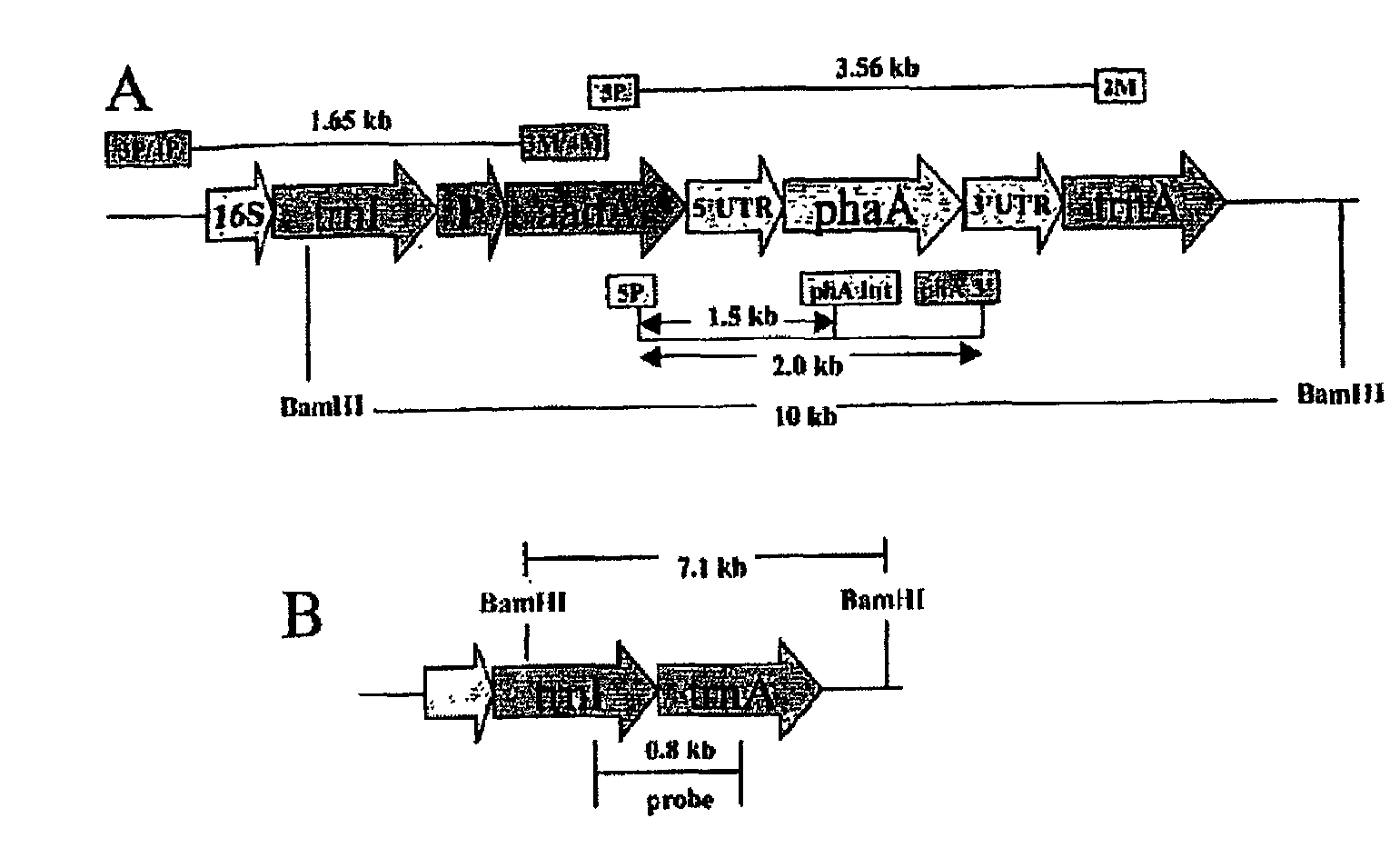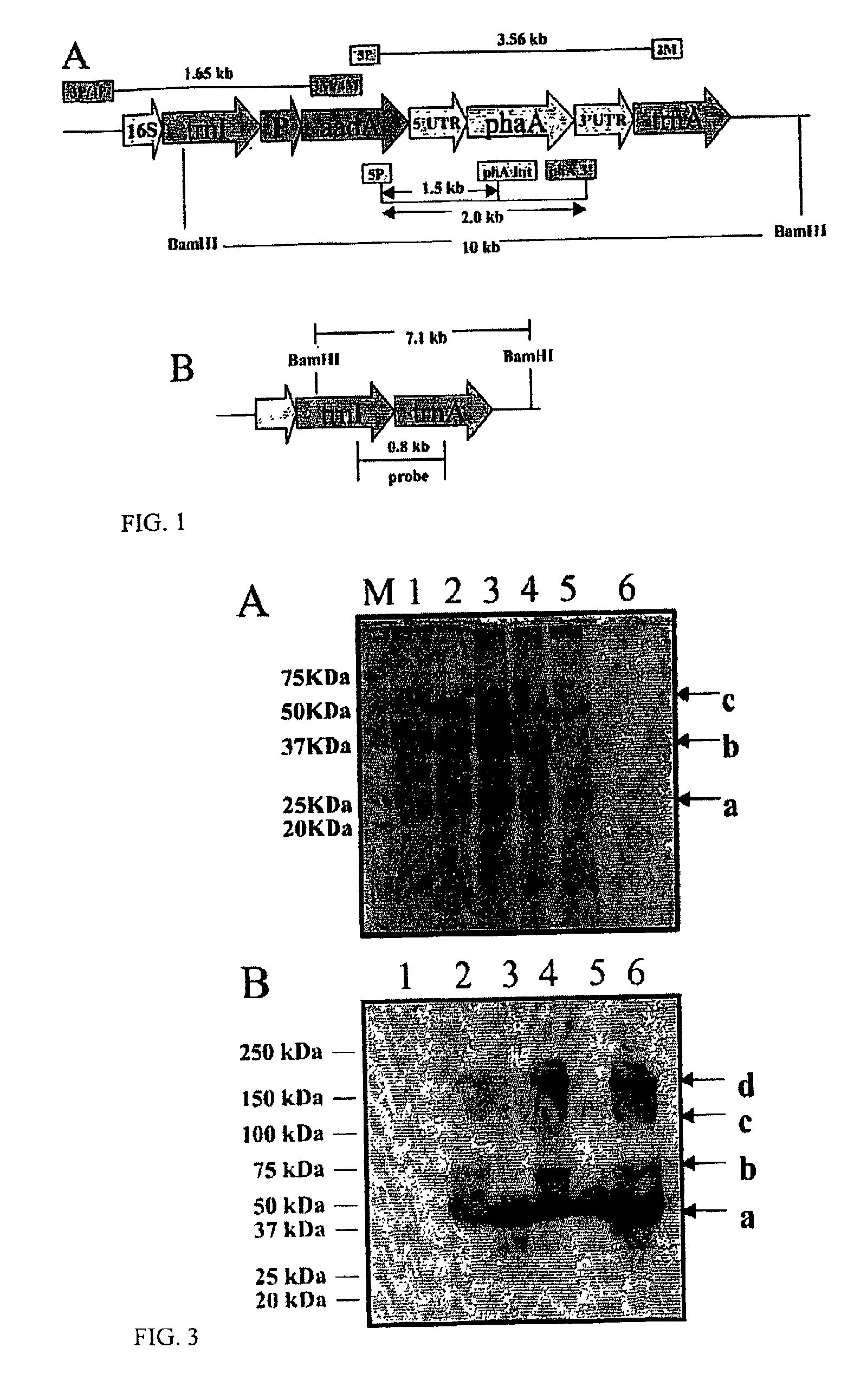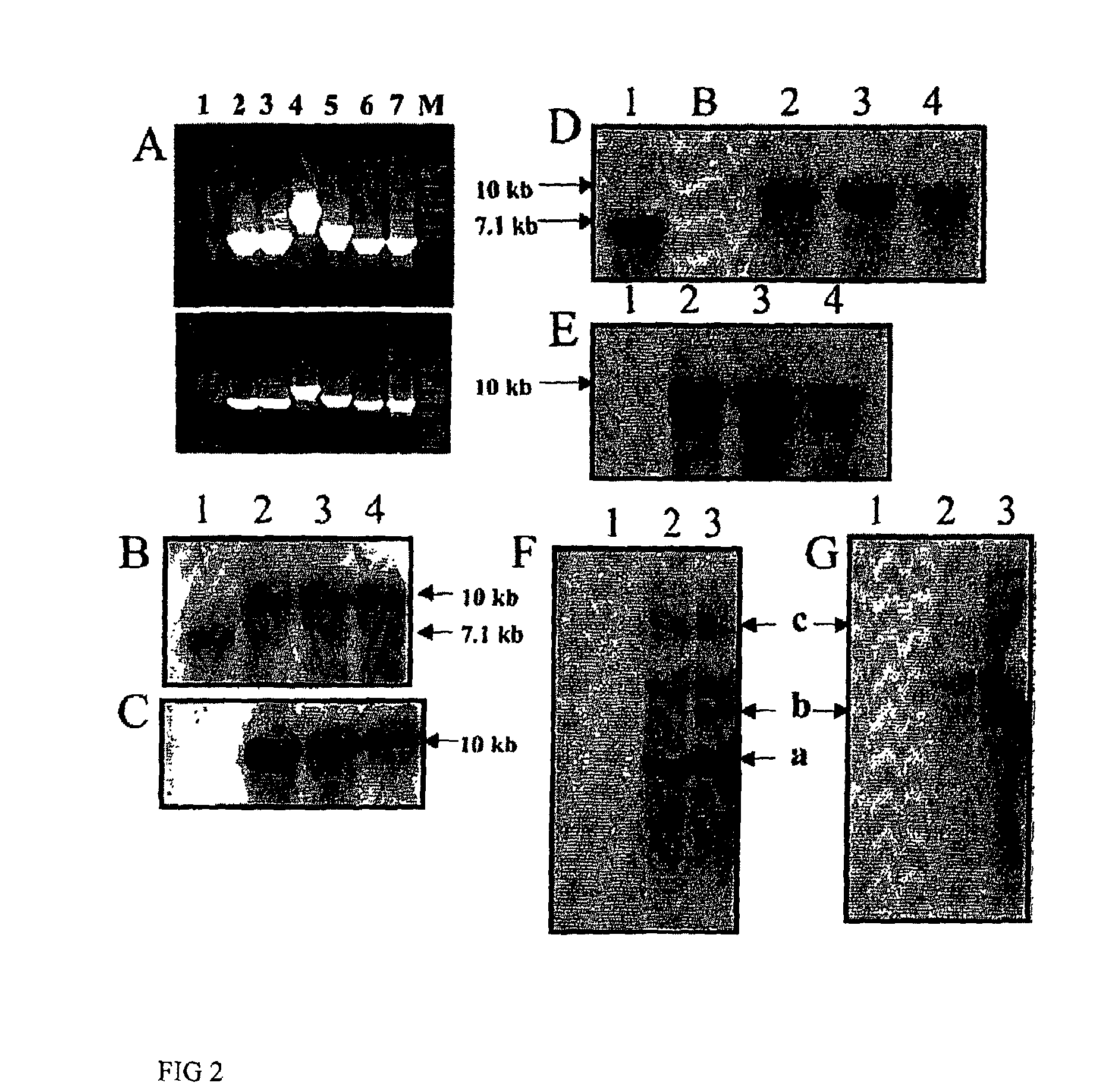Genetic Engineering of Male Sterility in Plants
- Summary
- Abstract
- Description
- Claims
- Application Information
AI Technical Summary
Benefits of technology
Problems solved by technology
Method used
Image
Examples
example 1
Chloroplast Vector Construction
[0039]Plasmid DNA from Acinetobacter sp coding for the phaA gene (pJKD 1425) was provided by Metabolix (Cambridge, Mass.). Isolation and amplification of the phaA gene from the native plasmid was performed by polymerase chain reaction (PCR) with the utilization of phaA specific 5′ and 3′ flanking DNA primers. All primers were designed using the QUICKPRI program of the DNASTAR software. The PCR product was cloned into the vector pCR2.1-5′UTRpsbA, which contained the functional psbA gene promoter and 5′ regulatory sequence, by directional cloning after NdeI and NotI restriction digestion of the PCR product and vector. The phaA gene and the 5′UTRpsbA region were sequenced and subsequently cloned into the chloroplast transformation vector pLD-ctv, by directional insertion using appropriate restriction enzymes.
[0040]The Acinetobacter sp (accession no: L37761, sequence available via NCBI website www.ncbi.nlm.nih.gov) gene, phaA (1179 bp) coding for β-ketothi...
example 2
Chloroplast Transformation and Selection of Transgenic Plants
[0041]The delivery of the pLDR-5′UTR-phaA-3′UTR vector to the chloroplast by particle bombardment and the subsequent selection process of the transgenic tobacco (Nicotiana tabacum var bombarded using the biolistic device PDS-1000 / He (Bio-Rad, Hercules, Calif.). After bombardment, leaves were placed on Regeneration Medium of Plants (RMOP), supplied with 500 μg mL−1 spectinomycin for two rounds of selection on plates, and subsequently moved to jars on Murashige Skoog medium containing 500 μg mL−1 spectinomycin. Finally, homoplasmic plants were transferred to high nutrient soil and grown in a controlled growth chamber at a temperature of 26° C. in a 16-h / 8-h light / dark photoperiod.
example 3
Confirmation of Chloroplast Integration by PCR
[0042]Isolated total plant DNA from untransformed and transgenic plants using the DNeasy Plant Mini Kit (Qiagen, Valencia, Calif.) was used as the template for PCR reactions. The PCR primer pairs 3P-3M and 4P4M were used to confirm the integration of the gene cassette into the chloroplast, essentially as described previously (34). Primer pair 5P-2M, 5P-phaA internal and 5P-3′phaA were used to confirm the presence of the phaA gene. PCR analysis was performed using the Gene Amp PCR System 2400 (Perkin Elmer, Chicago).
PUM
| Property | Measurement | Unit |
|---|---|---|
| temperature | aaaaa | aaaaa |
| temperature | aaaaa | aaaaa |
| pH | aaaaa | aaaaa |
Abstract
Description
Claims
Application Information
 Login to View More
Login to View More - R&D
- Intellectual Property
- Life Sciences
- Materials
- Tech Scout
- Unparalleled Data Quality
- Higher Quality Content
- 60% Fewer Hallucinations
Browse by: Latest US Patents, China's latest patents, Technical Efficacy Thesaurus, Application Domain, Technology Topic, Popular Technical Reports.
© 2025 PatSnap. All rights reserved.Legal|Privacy policy|Modern Slavery Act Transparency Statement|Sitemap|About US| Contact US: help@patsnap.com



